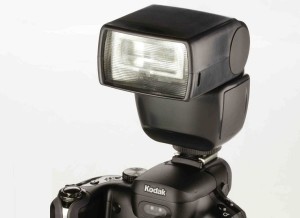 A flash is a device used in photography to produce a flash of artificial light to illuminate a dark scene or improve light quality. While most cameras have built-in flash features, an external flash unit is advantageous when powerful or greater range of illumination is required. An external flash’s directionality is also an advantage. It can be swiveled, tilted or skewed to provide softer lighting.
A flash is a device used in photography to produce a flash of artificial light to illuminate a dark scene or improve light quality. While most cameras have built-in flash features, an external flash unit is advantageous when powerful or greater range of illumination is required. An external flash’s directionality is also an advantage. It can be swiveled, tilted or skewed to provide softer lighting.
External flash units are either attached to the camera’s body through a dedicated slide-in slot or are connected to the camera using a cable. They are electronically connected to the camera and are synchronized with the shutter. They also have their own set of batteries enabling them to recycle (recharge and be ready) faster, without draining the camera’s batteries.
When shipping an external flash unit, it must be properly packed to prevent any damage during transit. Here are some tips on how to properly pack and ship a camera flash.
Remove the batteries from the flash unit. Place the flash unit in its original packaging (if available), making sure that it snugly fits and does not move around. If there is no original box, place the flash unit in a zip bag and wrap generously in bubble wrap, making sure that all parts are well-padded. Use tape to secure the wrap.
Place the wrapped flash unit inside a small box with packing materials all around. The packing materials should prevent any movement inside the box. Close and seal the package.
For added protection, double box the package in a slightly larger shipping box. Fill the spaces between the inner and outer boxes with packaging materials to prevent movement. Close and seal the outer box with packaging tape.
Address and label the package and take to the post office or carrier of your choice.
